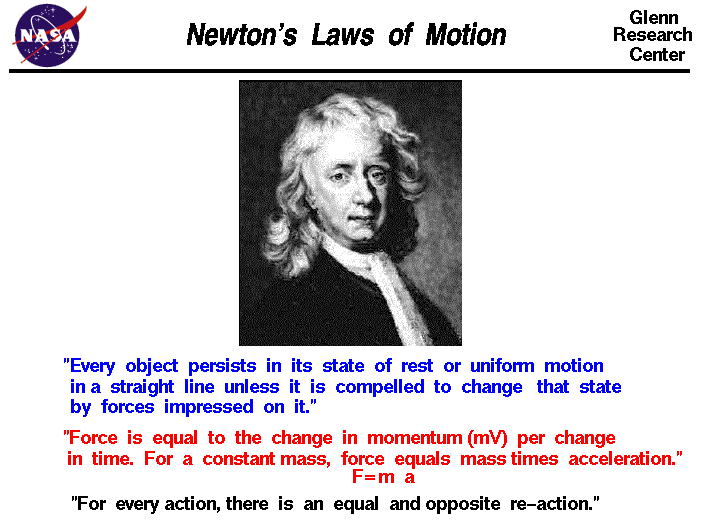Newton's Laws Of Motion

Newton's First Law
Newton's First Law states that an object will remain at rest or in uniform motion in a straight line unless acted upon by an external force. It may be seen as a statement about inertia, that objects will remain in their state of motion unless a force acts to change the motion. Any change in motion involves an acceleration, and then Newton's Second Law applies; in fact, the First Law is just a special case of the Second Law for which the net external force is zero.Newton's First Law contains implications about the fundamental symmetry of the universe in that a state of motion in a straight line must be just as "natural" as being at rest. If an object is at rest in one frame of reference, it will appear to be moving in a straight line to an observer in a reference frame which is moving by the object. There is no way to say which reference frame is "special", so all constant velocity reference frames must be equivalent.
Centripetal Force Example
The string must provide the necessary centripetal force to move the ball in a circle. If the string breaks, the ball will move off in a straight line. The straight line motion in the absence of the constraining force is an example of Newton's first law. The example here presumes that no other net forces are acting, such as horizontal motion on a frictionless surface. The vertical circle is more involved.Newton's Second Law
Newton's Second Law as stated below applies to a wide range of physical phenomena, but it is not a fundamental principle like the Conservation Laws. It is applicable only if the force is the net external force. It does not apply directly to situations where the mass is changing, either from loss or gain of material, or because the object is traveling close to the speed of light where relativistic effects must be included. It does not apply directly on the very small scale of the atom where quantum mechanics must be used.
Data can be entered into any of the boxes below. Specifying any two of the quantities determines the third. After you have entered values for two, click on the text representing to third to calculate its value.